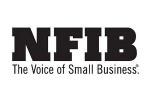WASHINGTON — With a new year stretched out before us, it falls to owners of drycleaning companies to chart a course to make the most of possibilities and steer away from potential hazards. To aid in this effort, the National Federation of Independent Business (NFIB) recently hosted a webinar, “7 New Year’s Resolutions for Your Business,” to help owners get themselves and their companies ready for 2023.
The webinar was hosted by Beth Milito, executive director of NFIB’s Small Business Legal Center, and Holly Wade, executive director of the NFIB Research Center.
In Part 1 of this series, we examined how making — or revising — a business plan can allow small-business owners to concentrate their efforts on what really matters for their company. In Part 2, we looked at how to keep marketing efforts from falling by the wayside, and why some customers might be costing your business more than they bring in. In Part 3, we focused on the most valuable asset a drycleaning business has — its employees. Today, we’ll conclude by examining the remaining resolutions and putting them all into motion.
Assess Areas of Risk and Growth
Small companies, such as most drycleaning businesses, can find themselves at risk because they don’t pay attention to areas that are easily ignored.
“One of the first areas is to maintain adequate insurance,” Milito says. “You want to make sure you do an insurance examination every so often. It doesn’t need to be an annual event, but you do need to think about insurance in regard to how your business is currently operating. Sit down with your insurance agent and have a good relationship with them. It’s very important.”
Because businesses are constantly evolving, this regular check-in is necessary, she says.
“As your business grows or potentially restricts, you want to make sure you’re maintaining adequate insurance and are not underinsured or, vice versa, spending too much money on insurance for things you no longer need,” Milito says.
Assessing employee classifications and other areas also needs attention.
“We get a lot of inquiries in our legal center about wage and hour issues, exempt versus non-exempt and independent contractor misclassification,” Milito says. “These are two areas that state labor departments are looking very closely at and scrutinizing. So, you want to make sure that you are complying with federal and state wage and hour laws.”
Tax Planning
During a focus group with small business owners about tax preparation, the NFIB found that the biggest obstacles reported related to paperwork burdens, the frequent changes of the tax code and not understanding or being able to keep up being with the business’s taxes.
“All the paperwork requirements associated with tax complexity is a challenge,” Wade says. “We hear stories all the time about small business owners having challenges, not knowing whether they’re taking advantage of all the deductions that they’re eligible for, whether they’re taking advantage of all the available tax credits, and making sure they’re in compliance with federal and state.”
One of the major sticking points is dealing with tax planning and the Employee Retention Tax Credit (ERTC) program. While the ERTC was developed to help business owners weather the pandemic, questions about who is eligible and the timelines involved for filing and receiving benefits have been, to say the least, unclear in many instances.
“There are a lot of small business owners who have applied for the amended ERTC filing to take advantage of that program and still haven’t received the check,” Wade says. “There are a lot of folks out there still waiting and not hearing from the IRS or knowing when they might expect that check in the mail.” Wade says that it has taken some businesses more than a year to receive benefits. “It’s hugely frustrating for those who qualified and are relying on that,” she says.
Because this area is so murky for many business owners, Wade advises people to speak to their CPA or tax professional about this — and do it at the beginning of the year to take full advantage of any benefits that might be available, including the ERTC.
Plan and Execute with Your Employees
“Having an all-hands-on-deck meeting to gather input and discuss new plans for the new year with your employees ties into employee retention efforts and sets expectations to reinforce good habits,” Wade says. “Showing appreciation, especially in this job market that’s so tight and so difficult to retain and recruit employees, is a benefit.”
Taking part in this type of activity not only makes employees feel valued, but it also offers the owner the ability to build good practices with the team and discuss eliminating bad habits. It also allows employees with special talents or skills to take on roles they otherwise might not realize exist.
“A lot of employees, hired for a specific job, might have interests and expertise in other areas,” Wade says. An employee might be a good fit for social media marketing, for example. “This is an area of opportunity for small businesses, where employees are less limited in the scope of their job. This would be a great opportunity to talk through some of these benefits and opportunities with them at the beginning of the year.”
For Part 1 of this series, click HERE. For Part 2, click HERE. For Part 3, click HERE.
Have a question or comment? E-mail our editor Dave Davis at [email protected].









































































































